'Farmers of the sea': A Florida stone crab's journey from the Gulf to SW FL restaurants
Murky. Messy. Tedious. Physically challenging.
These are the words I’ve used when describing stone crabbing to friends.
Until recently, this reporter held a fishing license with official recreational stone crab registration. I didn’t renew for 2023-24 as we no longer have a boat. A friendly neighbor is the beneficiary of our traps.
True confession: I’ve never eaten Florida stone crabs at a restaurant, given they’re so expensive and because we often had plenty plus extra claws in the freezer. For years, dinner chez Diana was a coveted invitation because that’s what we usually served.
While most area restaurants start serving these gems Oct. 16, how does one restaurant group with 25 locations spanning Tampa south to Key West get claws for their guests on Oct. 15, day one for legal harvesting of this pricey delicacy?
For answers, I headed to Pine Island on Oct 15.
Fresh off the boat
"Suits Me" Capt. Jason Bigler unloaded his catch around 2 p.m. while his crew cleaned his charter boat after docking. Their workday started at 5:30 a.m.
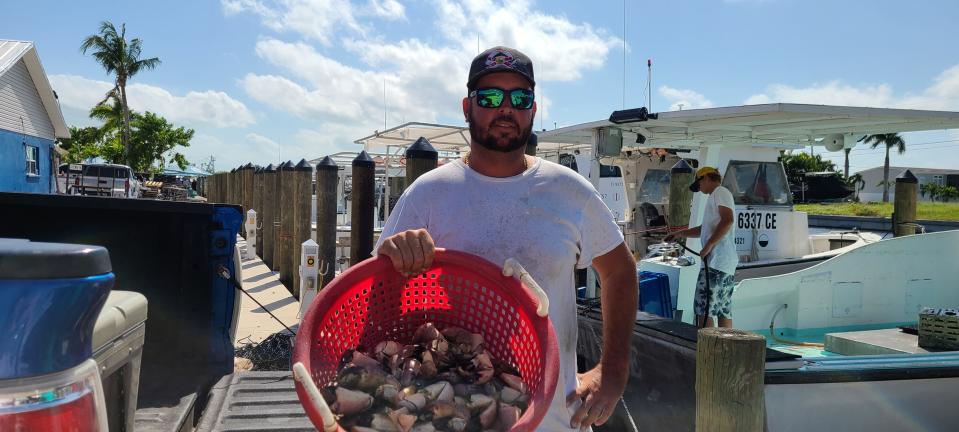
Windy weather made for a choppy day on the water. A peek inside Bigler’s stone crab basket looked like it was three-quarters full. He estimated it was 40 pounds.
Some traps had two or three crabs, but he said “quite a few had zero.”
Bigler has 2,700 traps in the Gulf and pulls (fishing lingo for checking) about 300 to 400 each trip. Diesel fuel, bait (pigs' feet) and labor costs are among his expenses.
Phelan Family Brands restaurants serve up stonies
Seven miles from the marina, I headed next to Jeff and Denise Haugland’s Island Crab Co. Since 1998, their business has been a joint venture with Phelan Family Brands for supplying just-caught seafood to the restaurant group, most famously Pinchers Crab Shack with 11 Florida locations. The day coincided with the 26th anniversary of its first restaurant in Bonita Springs in 1997; as such, that location usually receives first dibs.
Phelan also owns and operates The Bay House; CJ’s on the Bay; Deep Lagoon’s four outposts; Phuzzy’s Boat Shack; two Texas Tony’s Rib and Brewhouses; and Two Fillets.
In June, Phelan added to its portfolio by purchasing Culinary Concept's Chops in Bonita Springs and Naples, Pazzo plus Yabba Island Grill, now in the midst of a makeover for the launch of Keewaydin’s, a new restaurant concept.
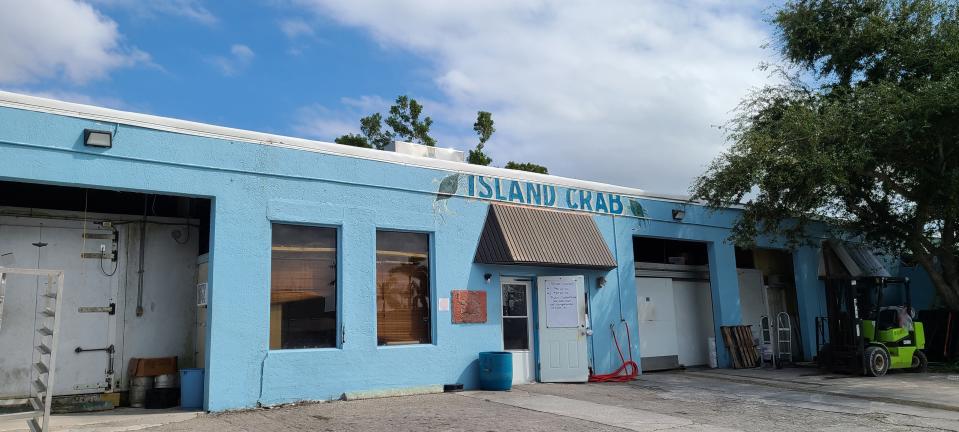
The facility includes a seafood processing plant, a distribution center and an enormous kitchen with several huge stainless steel tables for picking lump crab meat for appetizers and preparing crab cakes.
Fishing a family affair for Hauglands
Jeff Haugland’s been at it for 35 years. A self-described meat-and-potatoes guy who only eats stonies to test the quality of a day’s catch, he fell in love with fishing when visiting Southwest Florida during a family vacation.
He echoed Bigler’s gripe about the day’s rough waters, noting several of his company-owned boats couldn’t go out because it was so windy.
But sometimes, wind is a tool for success.
“A good northwest wind will stir up the water. A stone crab has many predators, so he doesn’t like to move around until the water’s muddy and he thinks no one can see him.”
Or her.
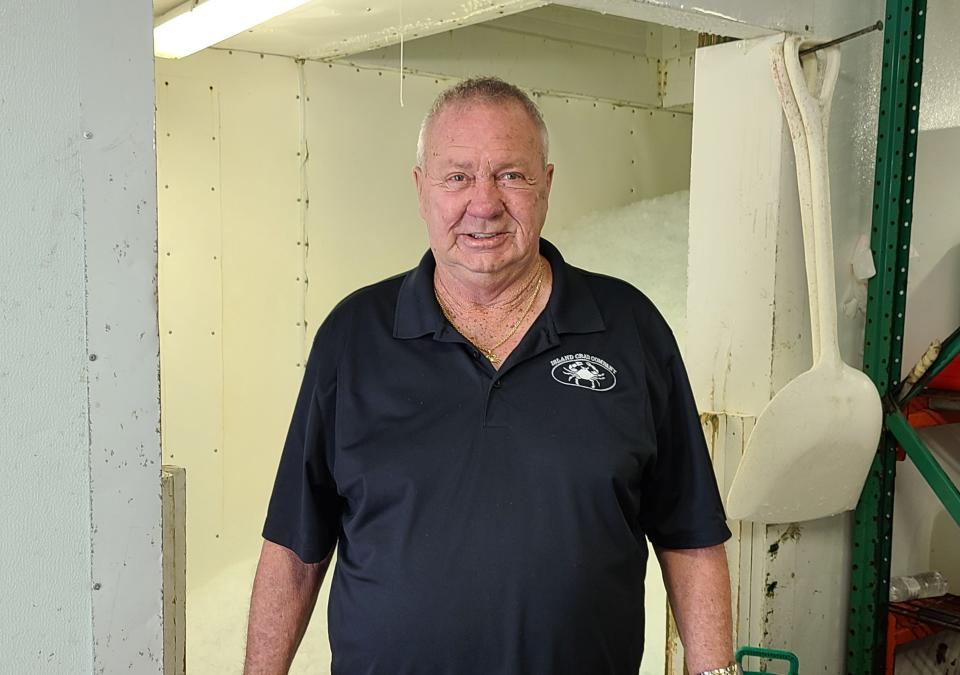
In addition to humans, predators include grouper and octopuses who love crabs and the bait; octopuses can devastate an entire trap with their tentacles.
“We’ll pull a trap, and there could be 10 empty shells when the crab couldn’t get away because an octopus sucked all the juice out of it.”
Haugland also communicates with other Florida crabbing companies, hearing how one big boat pulled 300 traps earlier in the day; the yield was a mere 34 pounds. Among a friendly competitor’s fleet of three boats, 300 traps were nearly empty, only yielding 100 pounds.
“If less than a quarter of checked traps have crabs, we’re hurting.”
'Farmers of the sea'
“We’re farmers of the sea. You have a bad crop and don’t make any money, but you still have expenses. There’s nothing you can do. We don’t have crop insurance.”
He knows from personal experience.
“Three years ago was such a bad year that I got four claws out of 400 traps checked in one day.”
He also explained that despite a slow first day, there’s no way of forecasting future success.
“If we knew that, we’d be rich.”
Like Tom Petty said, the waiting is the hardest part
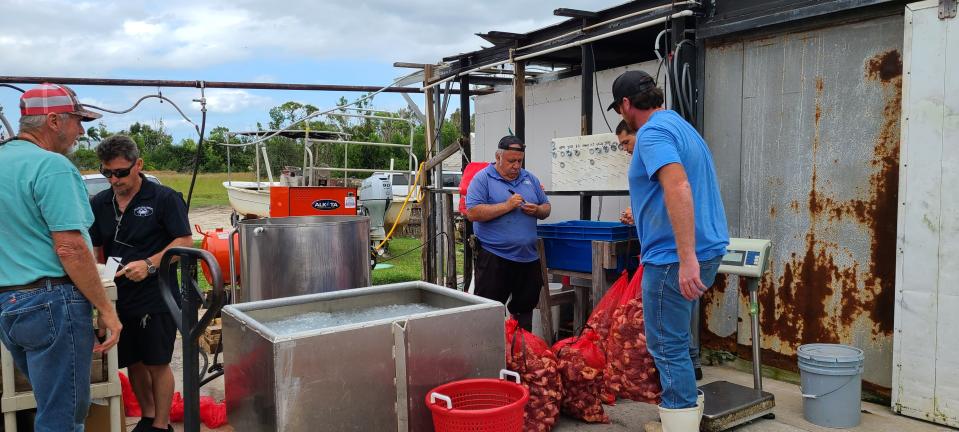
Throughout late afternoon, as trucks trickle into the facility with mixed-size claw catches, Ulbaldo Diaz grabs the baskets for bagging then tagging each catch with the boat captain’s name.
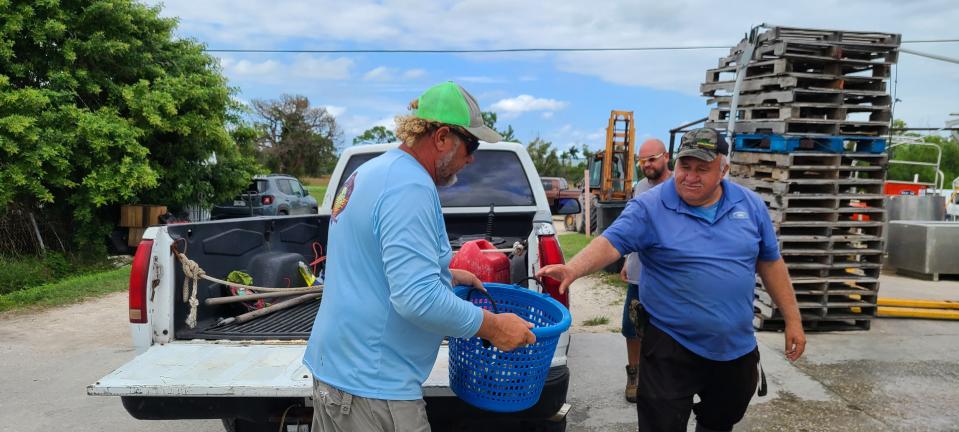
Bags are then “green weighted” on the scale, the first of two weigh-ins before being tossed in a vat for eight minutes of steaming, starting when the water reaches a rolling boil.
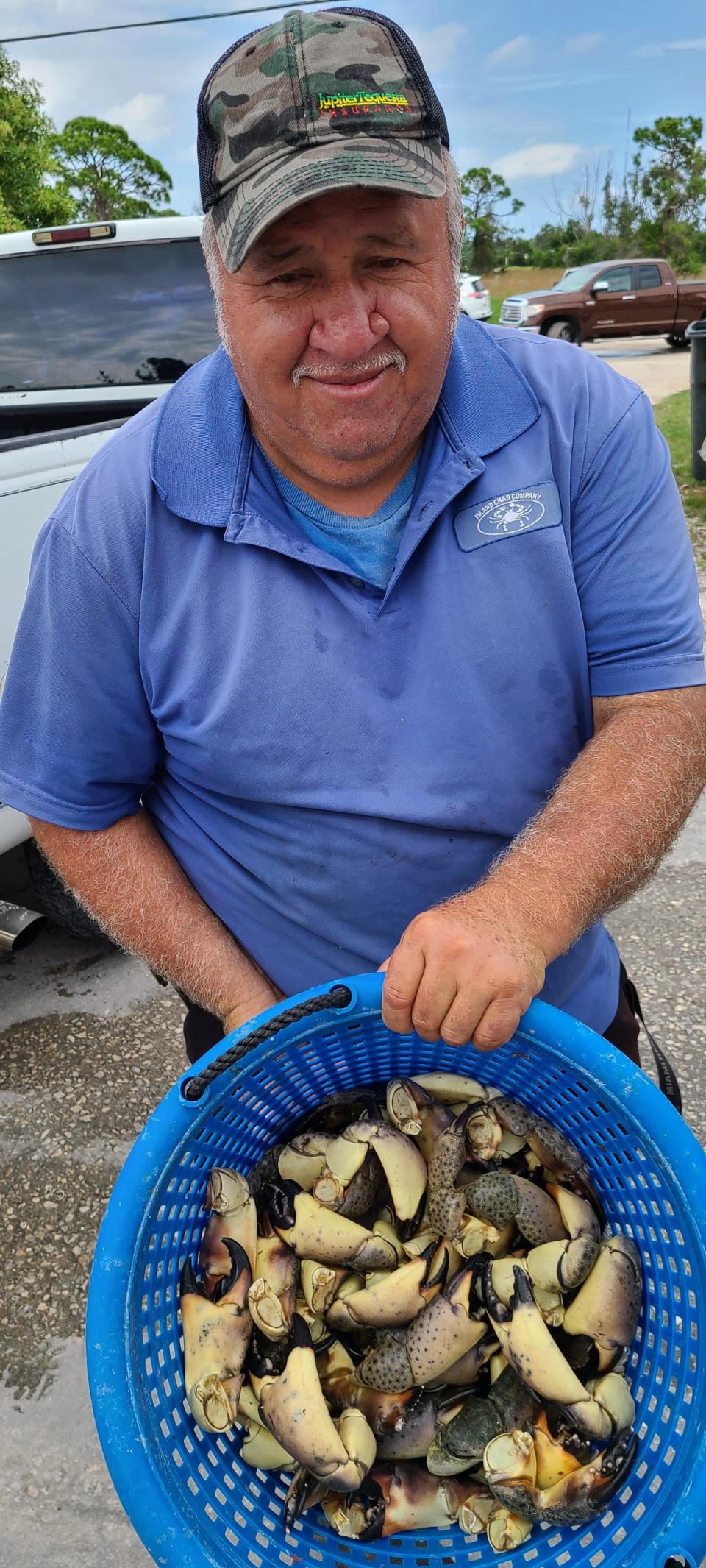
No matter the size, bag after bag is added to the vat following that first weigh-in. As competent cooks know, water’s temperature decreases anytime anything is added to a pot.
I spent an hour watching the water simmer before getting to a boil because the vat was now full-ish with nearly 500 pounds of crab claws.
Also watching: Phelan's team of general managers awaiting finished claws to take to their restaurants for dinner that night.
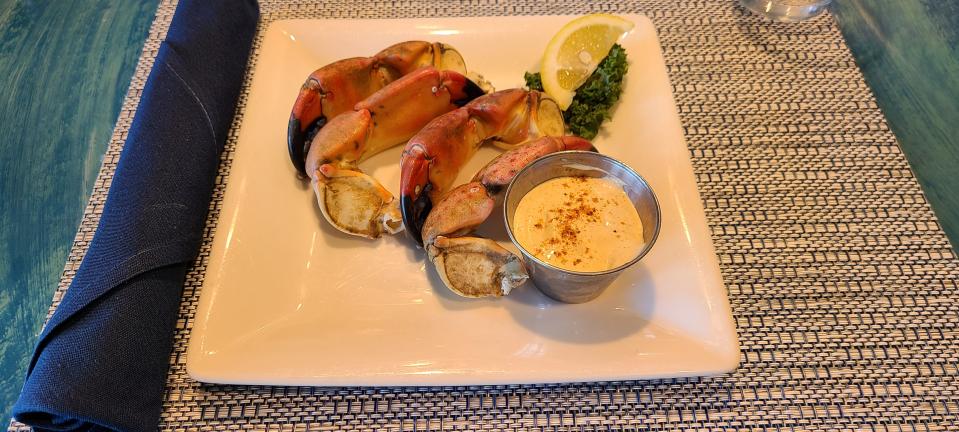
Weight, weight, don't tell me
Like the trendy cold-plunging wellness fad, bags of claws are next immersed in an ice bath for 15 minutes to stop cooking. A half ton of ice, exclusively for stone crab claws, is used daily.
Next stop: the kitchen, where claws are sorted by bag and graded by size ― light, medium, large and jumbos, which score the most money for captains.
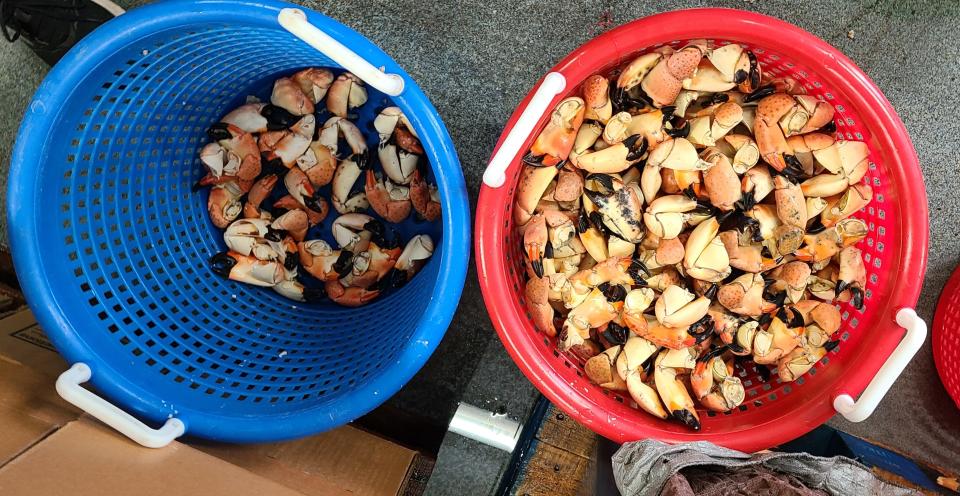
They are once again weighed by size and rounded to the nearest pound to determine how much a captain is paid.
'Just shut up and pull'
Although stone crabs are a seasonal delicacy, the hard work is year-round.
When the season ends May 1, many traps must be refurbished with ropes. Barnacles need to be scraped off. All get pressure washed and many are "bottom painted" so they don’t get as dirty next year.
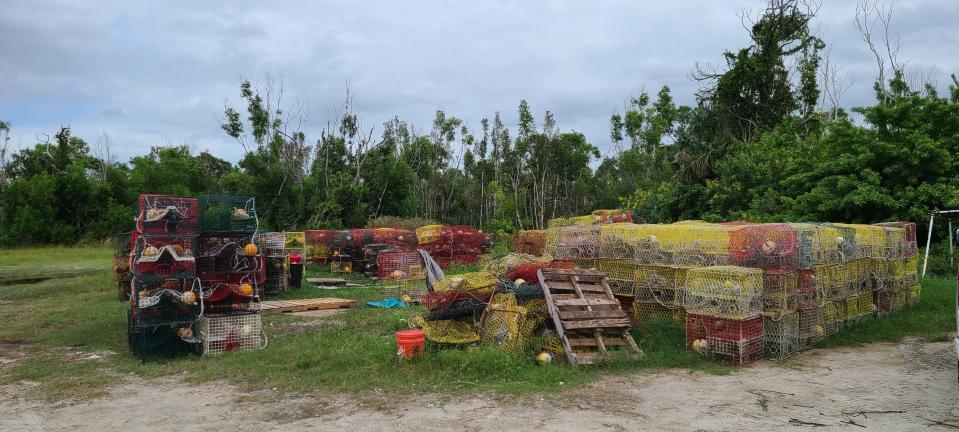
Last May, nearly 600 of Island Crab Co.’s traps were beyond repair or lost. Replacements range from $40 to $50, marking $30,000 spent on new gear.
State's best: 15 best waterfront restaurants in Florida, as chosen by USA TODAY Network writers
And if a crabber complains about how hard the process is, Denise Haugland's motto from 20 years ago is now featured on company T-shirts: Just shut up and pull.
Digital subscribers: Check out the gallery for more behind-the-scenes photos. Diana Biederman is the food and restaurant reporter for Naples Daily News. Connect via dbiederman@gannett.com.
This article originally appeared on Naples Daily News: Florida stone crab claws from Gulf to restaurants: We take you there

